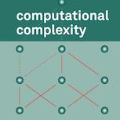One fundamental goal of high-dimensional statistics is to detect or recover planted structure (such as a low-rank matrix) hidden in noisy data. A growing body of work studies low-degree polynomials as a restricted model of computation for such problems: it has been demonstrated in various settings that low-degree polynomials of the data can match the statistical performance of the best known polynomial-time algorithms. Prior work has studied the power of low-degree polynomials for the task of detecting the presence of hidden structures. In this work, we extend these methods to address problems of estimation and recovery (instead of detection). For a large class of "signal plus noise" problems, we give a user-friendly lower bound for the best possible mean squared error achievable by any degree-D polynomial. To our knowledge, these are the first results to establish low-degree hardness of recovery problems for which the associated detection problem is easy. As applications, we give a tight characterization of the low-degree minimum mean squared error for the planted submatrix and planted dense subgraph problems, resolving (in the low-degree framework) open problems about the computational complexity of recovery in both cases.
翻译:高维统计的一个根本目标是探测或恢复隐藏在噪音数据中的人工结构(如低级矩阵)。越来越多的工作研究研究大量低度多声器作为这些问题的限制性计算模型:在各种环境下,已经证明低度多声器数据可以与最已知多面时算法的统计性能相匹配。先前的工作研究过低度多声器在发现隐藏结构存在方面的力量。在这项工作中,我们将这些方法扩大到解决估计和恢复(而不是探测)的问题。对于大量的“信号加噪音”问题,我们给用户以更方便的下限,以便解决任何度-D多面算法所能达到的最佳平均平方差。据我们所知,这些是确定恢复问题低度硬度的第一个结果,因为相关检测问题很容易。在应用中,我们严格地描述了安装子矩阵和植入密度子仪的问题的低度最低平均正方形错误(而不是探测)。对于“信号加噪声”问题,我们给用户提供了一种方便的下限约束,用于解决任何度-D度多元度可实现的最佳平均平方形错误。据中(在低度框架中)两种情况下的恢复问题。



